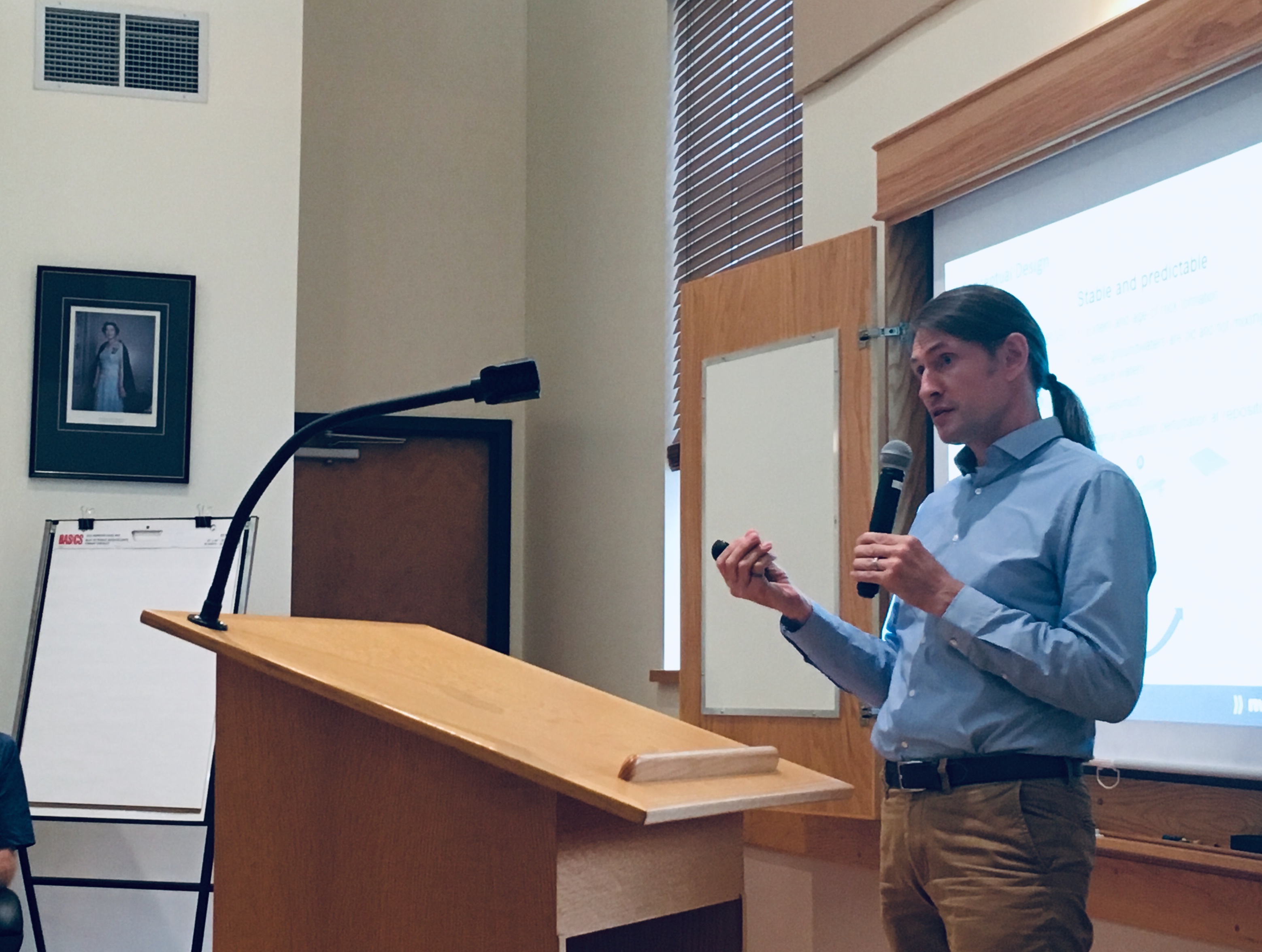Canada’s plan for the safe, long-term management of used nuclear fuel calls for the fuel to be contained and isolated in a deep geological repository, in an area with informed and willing hosts. Understanding how a deep geological repository will respond over extended periods of time is key to our work and involves the publication of a series of case studies focused on long-term repository performance.
Dr. Erik Kremer, Section Manager of Siting Safety Assessment at the Nuclear Waste Management Organization (NWMO), recently shared findings from the seventh case study (Postclosure Safety Assessment of a Used Fuel Repository in Sedimentary Rock), at the July meetings of the community liaison committees in Huron-Kinloss and South Bruce.
“The seventh case study illustrates how repository safety is assessed over the very long term. The case study considers normal evolution and disruptive scenarios, and concludes that a repository could be safely sited in the sedimentary rock formations found in southern Ontario,” said Dr. Kremer, whose day-to-day work focuses on the long-term safety of a deep geological repository.
These reports build on a series of postclosure safety assessments illustrating the long-term performance and safety of different repository designs within various geological settings. The seventh case study builds on existing work, including the sixth case study focused on crystalline rock.
“Dr. Kremer’s presentation of the seventh case study offered a great opportunity for the South Bruce Community Liaison Committee and members of the community to learn why the Nuclear Waste Management Organization is confident in the design of the deep geological repository,” said South Bruce Mayor Robert Buckle. “Erik did a wonderful job explaining the robust scope of safety studies completed, the approach behind each test, and the results of those studies in easy-to-understand terms.”
Postclosure safety assessments help build confidence in the long-term performance of a deep geological repository for Canada’s used nuclear fuel.
“A deep geological repository must be able to safely isolate used nuclear fuel over very long periods of time. These case studies help us understand and illustrate the long-term safety of a repository,” added Dr. Kremer. “They also provide a platform for discussion with our siting communities, their regional partners, the regulatory authorities, and other experts in the field, as well as with repository programs all around the world.”
The NWMO collaborates with organizations in Canada and around the world to bring their expertise together and remain consistent with international best practice. Ultimately, the safety case will be subject to peer review, both national and international, and an independent regulatory review by the Canadian Nuclear Safety Commission (CNSC).
The NWMO is on track to identify a single, preferred site for a deep geological repository by 2023, in an area with informed and willing hosts. When the NWMO applies for a licence, the application to the CNSC will include a safety case, which will include results of site-specific geoscience investigations, a site-specific repository design, and a comprehensive safety assessment.
No licence will be granted until the NWMO can demonstrate that the health and safety of the public, the workers and the environment are protected.

